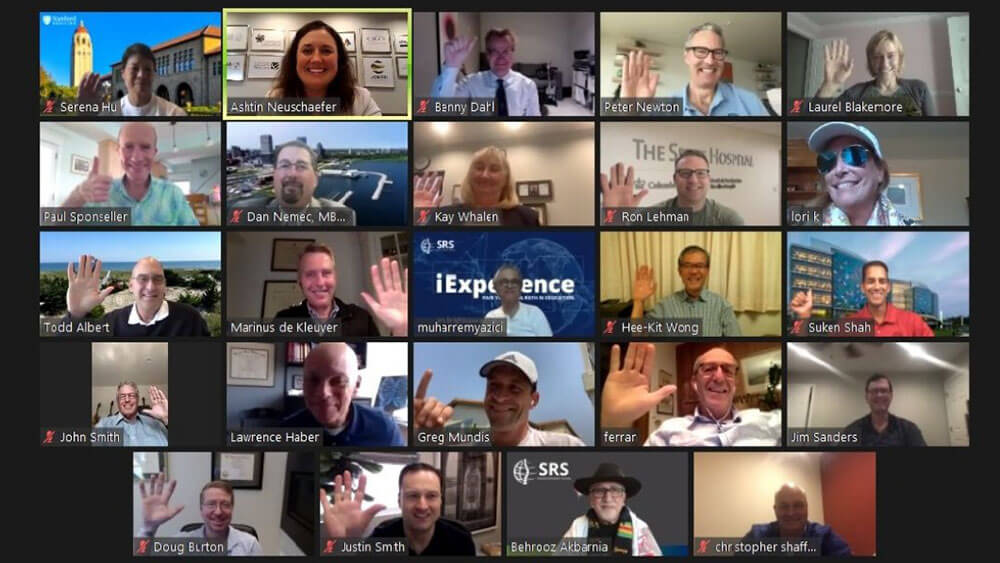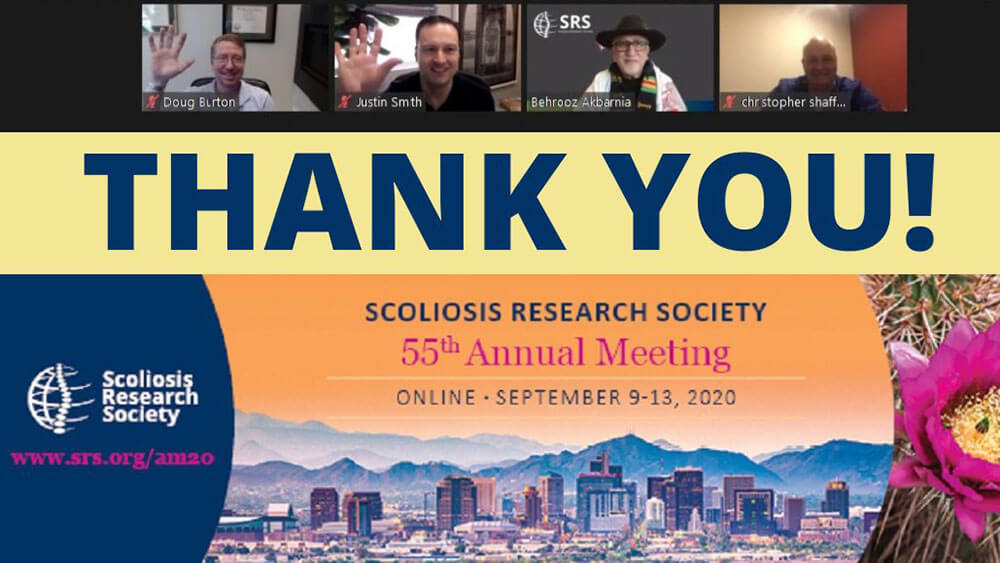
The digital annual meeting of the Scoliosis Research Society, held over four days, proved more engaging than the group’s International Meeting on Advanced Spinal Techniques, which tool place on weekends over several months. (Courtesy SRS Twitter)
We’ve published numerous case studies of events that have moved online during the pandemic, told from the point of view of their professional organizers. A recent Harvard Business Review article offered a different perspective: Five surgeons, four of whom serve on the board of the Scoliosis Research Society (SRS), shared the benefits and drawbacks of virtual medical conferences based on their experiences helping to plan SRS’s two largest events as digital versions — and also from the vantage point of being active conference participants themselves.
Physicians, the authors write, have long depended on live and in-person conferences — particularly sessions that use cadavers and simulation exercises — to maintain their skills and learn new techniques, as well as for personal and professional interaction with their colleagues and discussions that lead to new research and academic collaborations.
When the COVID-19 crisis forced SRS to move the International Meeting on Advanced Spinal Techniques (IMAST) and the SRS Annual Meeting online, leaders were challenged to replicate those benefits. The authors described in the article the different approaches that were taken for each, the results, and their thoughts about the future of medical conferences after the threat of the pandemic has passed. Here are highlights:
Optimal length of program — In-person IMAST meetings offer 100-plus presentations — abstracts, lectures, case-based discussions, debates, poster presentations and workshops —over the course of three to four consecutive days. For the virtual version, course material combined live and pre-recorded content spread out over five consecutive Saturdays in July and August, with sessions ranging from 30 minutes to three hours long.
The SRS Annual Meeting, on the other hand, was held over the originally scheduled four consecutive days, with two to four hours of content per day. The content was fairly evenly split between live concurrent sessions and pre-recorded self-paced learning sessions.
The spread-out IMAST program proved less engaging than SRS’s program. Participation at IMAST started out strong but declined in subsequent weeks, dropping by approximately 25 percent each week. The SRS Annual Meeting live-session engagement, the authors said, was “respectable”: nearly two-thirds the number of participants at the in-person event. However, the chat option resulted in a 10-fold increase in audience questions during each session, which faculty answered via text, compared to previous years’ in-person sessions.

The Scoliosis Research Society learned a lot from the group’s 55th Annual Meeting and the International Meeting on Advanced Spinal Techniques, both held virtually in 2020. (Courtesy SRS Twitter)
Biggest challenges of virtual — Coordinating the timing for live virtual sessions with the ability to interact with speakers in real time proved difficult with a global audience across multiple time zones. But what they found even more challenging, the authors write, is sustaining attendees’ undivided attention: “While an in-person conference requires physicians to set aside patient care and administrative tasks for travel and focused, multi-day attendance, there is no equivalent process with virtual learning. Physicians, accustomed to multi-tasking, often schedule the activities of their on-going day-to-day lives simultaneously with the virtual sessions, with the result of constant personal and professional distractions. Ultimately, the learning commitment in virtual formats may not be as strong as it is in face-to-face meetings. Measures such as requiring participants to turn on their cameras, offering two-way interactive sessions, and facilitating frequent participation through direct questions to participants can help to an extent but fall short with large groups.”
In addition to helping attendees avoid distractions, the authors offered four other approaches to maximize engagement: keep the session lengths brief (no longer than three to four hours per day), time the sessions to accommodate the schedules of the majority of participants, run the meeting over several consecutive days rather than dispersed over several weeks, and offer multiple concurrent Q&A chat rooms on sub-topics relevant to the main subject matter.
Future opportunities — The authors see room for innovation in virtual training: “Virtual reality, augmented reality, and 3D procedural simulation will allow for remote teaching and assessment of a new surgeon’s skill with a variety of techniques. … Indeed, technologies such as these could revolutionize residency and fellowship training by providing a mechanism for surgeons at smaller training programs or in developing countries to learn techniques virtually from master surgeons around the world.”
But in the end, they don’t foresee the end of physical events. Once the population is vaccinated, “the goal for physician education should be capitalize on the virtual format and provide an enhanced hybrid in-person/virtual experience. This will leverage the benefits both in-person and digital events offer, the authors conclude, writing that “the largest meetings with an international group of attendees will be most valuable when hosted live rather than fully virtual, to avoid time-zone difficulties with scheduling presentations and panel discussions. However, routine live-streaming and recording of these in-person conferences, which was done inconsistently before, should become standard to allow learners who cannot physically attend to join virtually to the extent possible and engage asynchronously.”
Michelle Russell is editor in chief of Convene.
